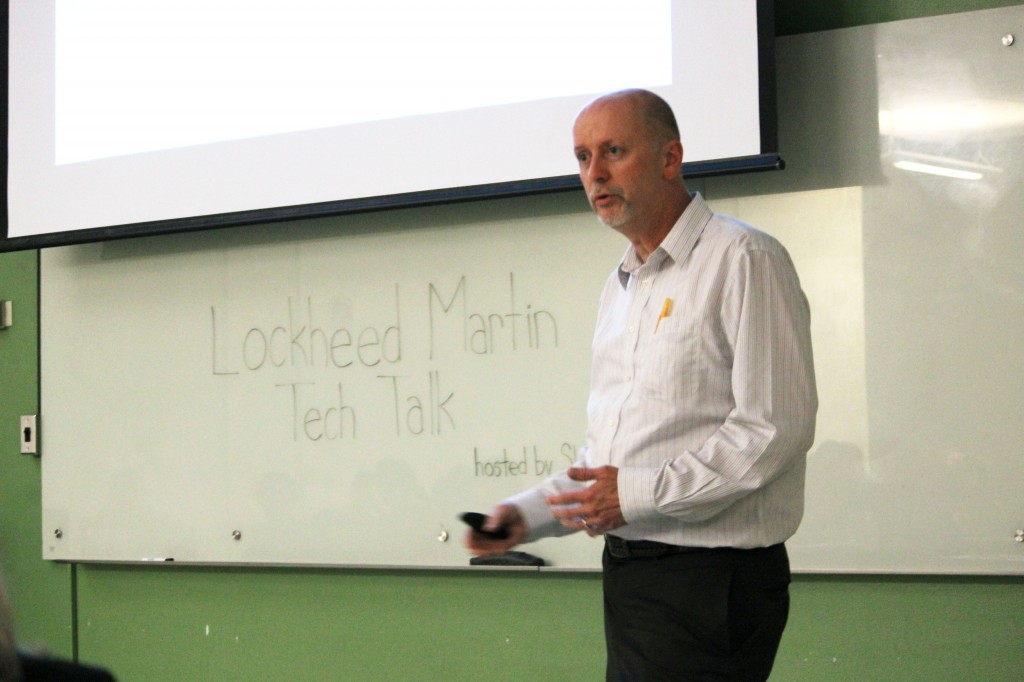
Lockheed Martin representatives visited Binghamton University to help students design their future careers and learn how to apply their major.
During Wednesday night’s “Tech Talk,” which was hosted by the Society of Women Engineers (SWE), speakers centered their presentations on systems engineering, which is an interdisciplinary field that requires a general knowledge of all sectors of engineering. Systems engineers focus on designing and managing projects for their consumers, and oversee them through every stage of development.
Mary Driver, the systems engineering manager at Lockheed Martin and BU alumna, explained that a systems engineer needs to have “depth and breadth.” She said it was important to have a deep understanding of the particular field of engineering that they studied while having a wide range of knowledge in many other fields of engineering.
“It’s being able to look at the big picture, the breadth. I may be deep in one system, but I also have the breadth across the systems so that I can understand how they work together,” Driver said.
According to Driver, the process of a systems engineer is based on responsibility to the customer. The system consists of following three steps. First is determining what the customer’s problem is and what they need fixed. Then finding a feasible solution and finally, testing the solution.
“We use the process to ensure that we can solve the problems no matter how complex they are,” Driver said.
Stephen Felter, a tech fellow at Lockheed Martin and a former adjunct professor at BU, presented the modeling process of systems engineers, and how they communicate their designs to the customers.
“You need to have some kind of formal notation to make sure that everyone’s communicating right,” Felter said. “In systems engineering, communication is one of the things you’re trying to accomplish.”
Felter explained that the way that systems engineers communicate is with modeling languages, an artificial form of communication that can be graphically or textually expressed information in a structure. The language is defined by rules that are used to interpret the different aspects of the structure.
“It defines certain kinds of diagrams that system engineers use to communicate,” Felter said.
Brandon Mancini, the Engineering Leadership Development Program (ELDP) manager, ended the conference by showing videos of products that Lockheed Martin has developed, such as the Kaman K-MAX, which is an unmanned helicopter that can lift up to 6,000 pounds, as well as the Joint Light Tactical Vehicle (JLTV), which is an armored combat and scout vehicle built for the United States military.
Kia Zivari, the president of SWE and a senior majoring in mechanical engineering, said she organized the event to help connect the students to the firm.
“It’s very important to expose the students of BU to what industry is doing, because that way we can understand and connect our studies to how they function, and the projects they’re working on,” Zivari said. “We held this to expose students to specifically what Lockheed Martin is doing because they’re a big company.”
Lillian Kravitz, the corporate and community chair of SWE and a sophomore majoring in industrial engineering, said that having Driver speak could inspire more women to become engineers.
“Mary is a SWE professional, which means that she’s a professional that the girls can look up to,” Kravitz said. “It shows that we can all be like her one day.”


